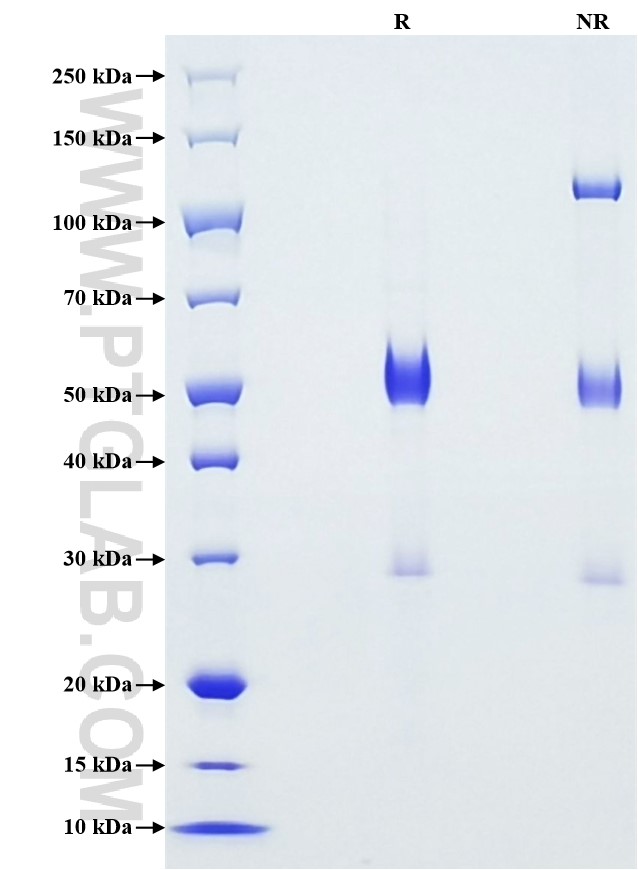Recombinant Human HSP47/SERPINH1 protein (His Tag)
种属
Human
纯度
>90 %, SDS-PAGE
标签
His Tag
生物活性
未测试
验证数据展示
产品信息
| 纯度 | >90 %, SDS-PAGE |
| 内毒素 | <0.1 EU/μg protein, LAL method |
| 生物活性 | Not tested |
| 来源 | HEK293-derived Human HSP47 protein Ala19-Leu418 (Accession# P50454) with a His tag at the C-terminus. |
| 基因ID | 871 |
| 蛋白编号 | P50454 |
| 预测分子量 | 45.3 kDa |
| SDS-PAGE | 48-60 kDa, reducing (R) conditions |
| 组分 | Lyophilized from 0.22 μm filtered solution in PBS, pH 7.4. Normally 5% trehalose and 5% mannitol are added as protectants before lyophilization. |
| 复溶 | Briefly centrifuge the tube before opening. Reconstitute at 0.1-0.5 mg/mL in sterile water. |
| 储存条件 |
It is recommended that the protein be aliquoted for optimal storage. Avoid repeated freeze-thaw cycles.
|
| 运输条件 | The product is shipped at ambient temperature. Upon receipt, store it immediately at the recommended temperature. |
背景信息
HSP47/SERPINH1 is also named as Serpin H1, CBP1, CBP2, 47 kDa heat shock protein, Arsenic-transactivated protein 3 (AsTP3) and Collagen-binding protein (Colligin). It belongs to the serpin family. The Serpin Family H Member 1 (SERPINH1) gene encodes a protein called HSP47, which is required for the correct folding and secretion of collagen. SERPINH1 has been implicated in several collagen-related diseases, such as, brittle bone disease, keloid scars, and lung fibrosis. SERPINH1 also correlates with the grade of glioma, and regulates proliferation, migration and invasion of glioma cell lines. SERPINH1 regulates the Wnt/β-catenin signaling pathway and modulates gastric cancer (GC) progression. SERPINH1 is aberrantly expressed in cervical cancer, breast cancer, glioblastoma and colorectal cancer. SERPINH1 promotes invasion and metastasis of breast cancer cells by regulating the expression of several extracellular matrix (ECM) proteins.
参考文献:
1. Duarte BDP, Bonatto D. (2018) J Cancer Res Clin Oncol. 144(12):2319-2328. 2. Tian S, et al. (2020) Aging (Albany NY). 12(4):3574-3593. 3. Zhao D, et al. (2014) J Neurooncol. 118(1):39-47. 4. Zhu J, et al. (2015) Cancer Res. 75(8):1580-91.
